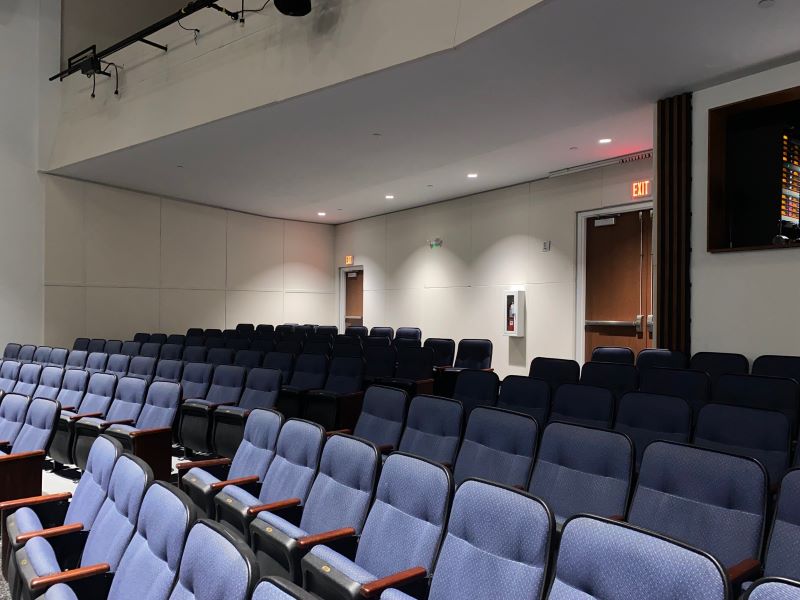Berkeley Preparatory School, located near the International Airport in Tampa, FL, was undergoing a significant remodel to their auditorium space. The new auditorium was being heralded as a major centerpiece of the school for years to come, and a community-wide achievement.
Acoustic Consulting for Acoustic Design
An acoustic consultant was brought in to support the architect and determine acceptable levels of acoustic treatment throughout the auditorium, in order to support the large assembly space (seating over 200) and provide acceptable quality for theatrical performances.

The consultant determined that a significant amount of acoustic paneling would be needed on the rear half of the auditorium, stretching from floor to ceiling. Furthermore, panels were specified on the face of the mezzanine (to reduce backslap echo) and along the entire rear wall of both the downstairs and mezzanine levels.

Learn More: Auditorium Acoustics – Factors to Consider When Designing for Sound
The initial auditorium had acoustical panels fabricated in the 1970s, with plastic edge protectors and older 3 pcf fiberglass cores. These antiquated panels had become quite dingy over the years, and needed a new acoustical fabric rewrap.
Auditorium Acoustic Treatment – Custom Cut Acoustic Wall Panels
Commercial Acoustics was contracted to custom-fabricate over 200 large commercial-grade acoustical wall panels throughout the space. Acoustical fabric was procured from Guilford of Maine, and after several days of detailed field measurements, the initial panels were fabricated and fit-checked. Over a four-week process, almost 3000 sf of wall and fascia space was covered with acoustically-absorptive paneling, then carefully QA’ed to ensure a level of quality acceptable to the high-end private school.

Like many grade school and college auditoriums, acoustic performance was critical to Berkeley. By consulting an acoustical engineer and specifying high-performance acoustical panels throughout the space, along with curved-wall acoustical diffusers to treat low frequency noise, Berkeley achieved excellent acoustical quality in the auditorium without requiring significant trial-and-error methods post-occupancy.

